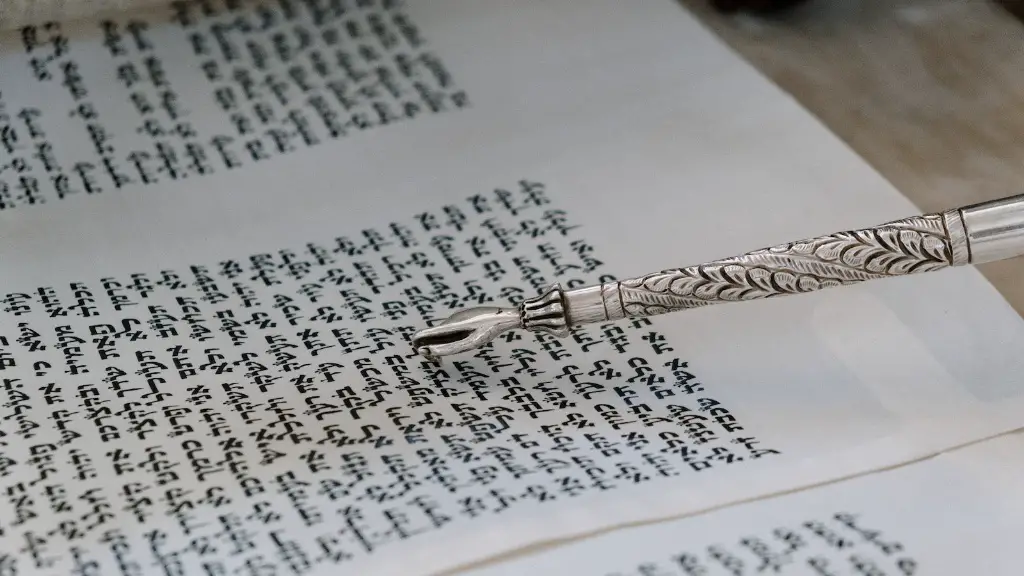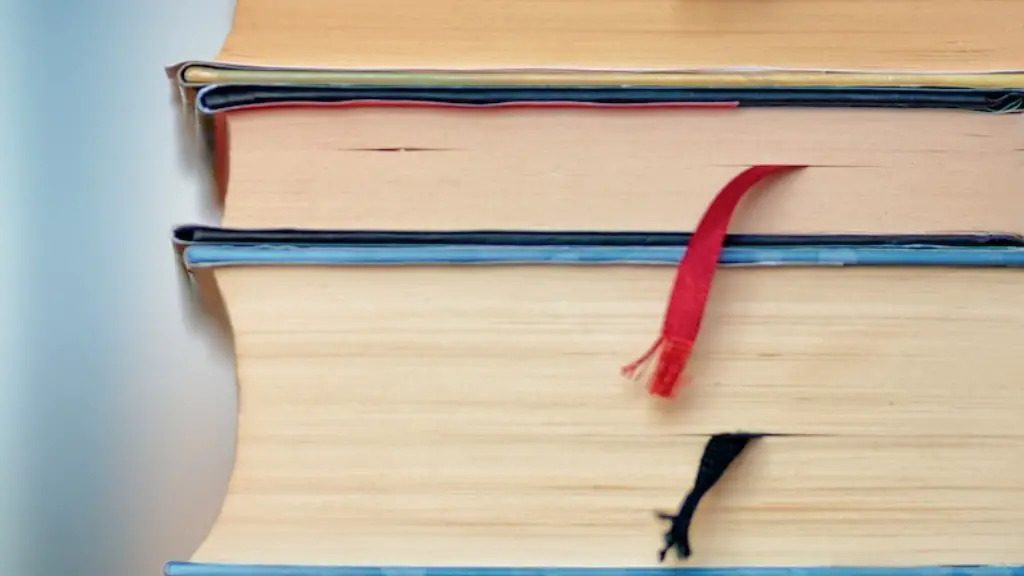How to Block Quote Poetry MLA
Block quoting poetry is an effective way of adding stylish commentary to a paper. For MLA style papers, it provides an aesthetic that catches the eye of the reader, allowing the author to express ideas in a more poetic way while giving their words a clear delineation. To begin block quoting a poem, the writer should first identify how many lines the quotation contains. This information will affect the formatting of the block quote.
Generally, any quotation of fewer than four lines of poetry should be integrated into the text of the paper, employing quotation marks to indicate the poet’s words. However, any quotation of four or more lines requires the writer to indent the quotation without quotation marks, as block quotes are excluded from the text of the paper. The first line of the poetic quotation should be indented an additional one inch from the rest of the quote, in accordance with MLA style. For example, if the poet’s words begin with the phrase “I have a dream,” the line would be indented two inches from the left margin, while the other lines of the quotation would remain indented one inch.
In regards to citing the source, the writer should include an appropriate MLA in-text citation following the quote. Directly citing poet or poet’s work may not be appropriate because of citation conventions. Instead, the writer should cite the anthology or other source in which the poem appears. For example, if a quotation is taken from a poem published in an anthology, the writer should cite the anthology rather than the poet, with the line of the poem and the cited page in parentheses after the quotation. This allows the reader to find the original source, in case they decide to look it up.
When it comes to punctuation within a block quote, the poem’s original punctuation should be kept, as it is an integral part of the poem’s meaning. Writers should not add any other punctuation, as this may obscure the poem’s true message. The ending punctuation of the quote should be followed by an appropriate parenthetical citation. This citation should include the page number from which the quote came.
In addition, the writer should not introduce any changes to the poem’s spelling or grammar when quoting a poem in MLA. It is important to retain the original linguistic structure of the poem, as it is an important part of the poem’s meaning. In the event of any words being added to the original quote, they should be in brackets, as to make it clear that they were not part of the original poem.
Citing Block Quoted Poetry
In the event that a block quoted poem is cited in an MLA paper, the writer should include all relevant source details. These must include the poem’s author, the source in which the poem appeared and the page number. If the poem was taken from an anthology, the writer should cite it instead of citing the poem author directly, as it would be excessive to cite each author individually. The page number should be introduced in parentheses directly after the block quoted poem.
The MLA style calls for the writer to cite if the poem is taken from an anthology, which should include the anthology’s author, the title of the anthology, the publisher, the date of the original publication, and the page number of the particular poem quoted. An example of such a citation would look like this: (Ada, “The Rainbow”, in World Anthology, ed. William S., Pearson, 2020, p. 53).
Sometimes, a poem may be taken from an online source, such as an online journal, or a website. In such cases, the author should properly cite the poem by mentioning the date of publication and the website address. The date should be inserted after the author’s name, as it is not required for it to appear in parentheses. An example of a website citation would look like this: Ada, “The Rainbow”. World Anthology, 2020, http://worldanthology-journ.com/.
Including Analysis with Poem Quotes
When quoting poetry in an MLA paper, it is important that the writer engages the reader and adds their own analysis. This should be done while remaining respectful and true to the poem’s message. The writer should begin an analysis by deciding the poet’s purpose and the context in which the poem was written, as well as the effect it had on them. Further, the writer should try to identify the poem’s subject matter, as well as its emotional content. For example, the poem may explore themes of love and heartbreak, or present a social commentary on race. It is important to note how the poet uses symbolism, metaphor, and other rhetorical devices to convey their ideas.
Once the writer has identified the poem’s meaning and its emotional content, they can present their interpretations. These interpretations should be introduced in the text, and should be supported with relevant evidence from the poem itself. It is important that the writer does not provide their opinions without evidence from the poem, as this might lead to a personal attack against the poem or poet. By engaging the reader with thoughtful analysis of the poem, the writer can advance the argument in their paper.
Using Block Quoted Poetry to Support an Argument
Block quoted poems can be used in an MLA style paper to support an argument. The writer should be aware that simply quoting a poem may not be enough – they must engage the poem and connect it with their own argument. For example, the poem might be used to oppose or support the writer’s stance, or to emphasize a particular point. The writer should connect the poem to their argument, providing evidence to support their stance.
When citing a poem, the writer should introduce it and explain its relevance to the paper. This gives the reader an idea of the poem’s purpose and its importance to the writing. The writer should then explain the poem in the context of their paper, connecting the poem to their argument. This should be done with evidence from the poem itself, demonstrating the poem’s relevance to the paper. By doing this, the writer can effectively include the poem in their paper.
Tips For Using Poetry in an MLA Paper
Before using poetry in an MLA paper, the writer should be aware of the conventions and expectations associated with it. Firstly, the writer should be aware that all sources used must be cited. This includes any direct quotations from the poem itself, as well as more general references to the poem’s content. The writer should also be sure to adhere to conventional grammar and spelling rules when citing a poem. When block quoting a poem, the writer should adhere to the formatting standards described by the MLA style guide.
When writing an MLA paper on a poem, the author should refrain from summarizing the poem and instead focus on providing a thoughtful analysis. This should include evidence and discussion on the various literary devices employed by the poet, as well as the poem’s symbolism and emotional content. The writer should also be mindful of the language they use when writing on such a topic – they should remain respectful of the poet and their work, as well as of their own opinions.
Continual Learning
Learning about block quoting poetry in MLA style is an ongoing process, and there are many ways to keep up to date on the latest conventions. Websites and scholarly articles dedicated to teaching about MLA style can be an invaluable resource for anyone interested in learning about quoting poetry according to the MLA style. Additionally, there are a number of textbooks and publications that provide detailed guidance on the style, including The MLA Handbook and The Norton Guide to Writing. These books provide a comprehensive overview of MLA style, including an in-depth section on quoting poetry.
In addition to instructional materials, other writers and poets can be a great source of information and advice. Consulting with experienced writers and poets can provide a first-hand look into the creative process and can help writers better understand the nuances of quoting poetry. Finally, attending poetry readings and writing workshops can also be a great way to practice quoting poetry in MLA style, as well as to gain a greater understanding of poetry in general.
Conclusion
In conclusion, block quoting poetry can be an effective way to enhance an MLA paper. It allows the writer to express ideas in a unique and poetic way, while still adhering to the conventions of MLA style. When quoting poetry, the writer should be mindful of the punctuation and grammatical conventions of the poem and adhere to the formatting standards of the MLA style guide. The writer should also remember to include appropriate citations, so that the reader can locate the original poem. Additionally, the writer should engage the poem in their analysis and draw connections to their argument. With these tips, the writer can successfully quote a poem in an MLA paper.

